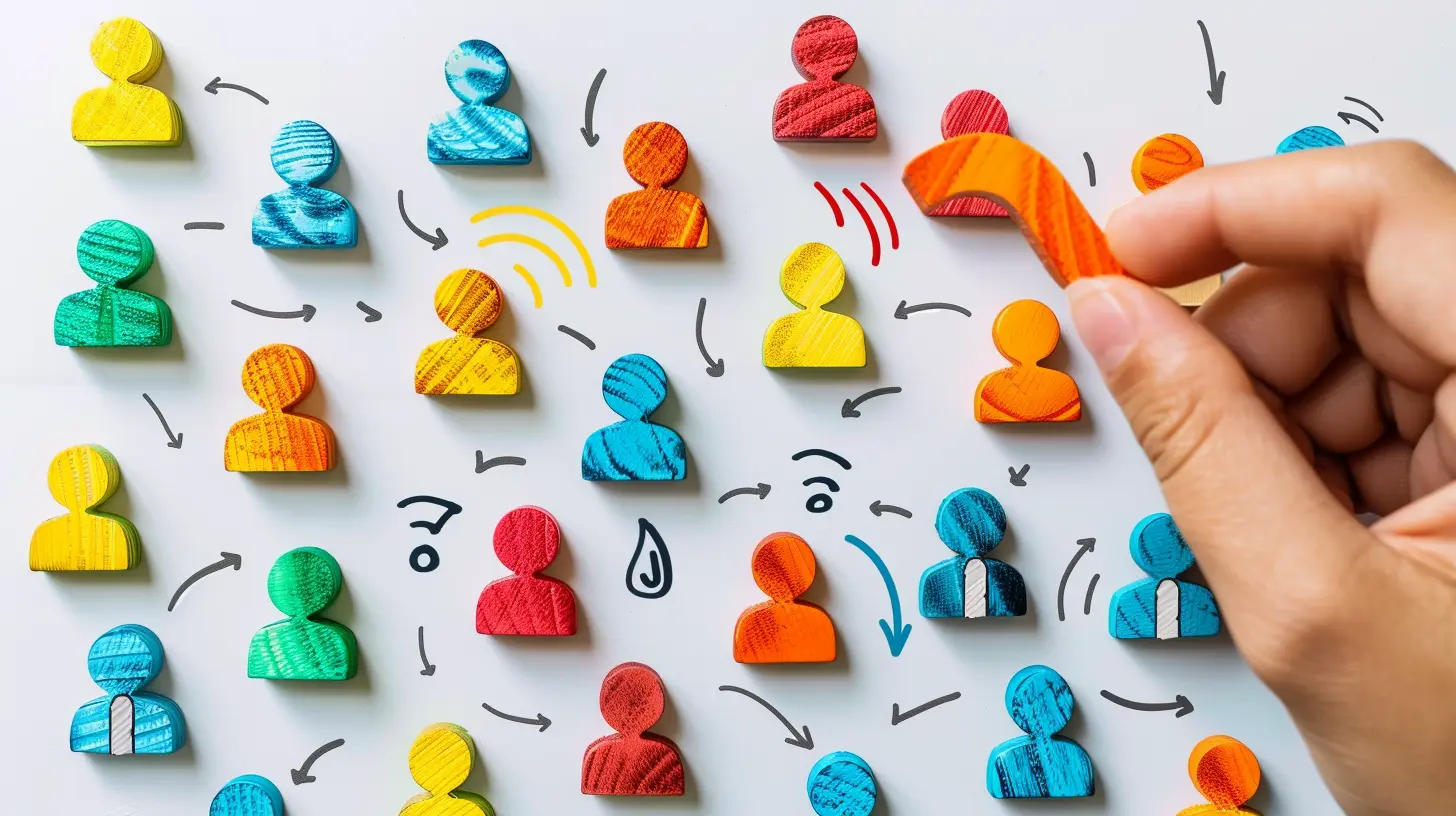The Power of Personalization in Business Development
13 August 2025
Think about the last time you received a message or product recommendation that made you go, “Wow, that’s exactly what I needed!” That little spark of connection? That’s the magic of personalization. In today’s noisy, competitive business world, personalization isn’t just a “nice-to-have” — it’s the secret sauce that sets successful businesses apart from the rest.
Personalization is no longer just about slapping someone’s name in an email subject line. It’s about creating meaningful, relevant experiences that speak directly to your customer’s needs, preferences, and behaviors. Let’s dive deep into the world of personalization in business development and see how this powerful tool can completely transform how you connect with your audience and grow your brand.
What Exactly Is Personalization in Business Development?
Before we go any further, let’s get clear on what we mean by personalization in the context of business development.In simple terms? It means tailoring your messaging, offers, and experiences to individuals based on who they are, what they do, and what they care about.
It’s like having a GPS for each customer — instead of giving everyone the same generic map, you’re giving them turn-by-turn directions based on where THEY want to go.
In business development, personalization comes into play at every stage — prospecting, nurturing, pitching, closing deals, onboarding, and even after-sales service. Wherever there's a touchpoint with a potential or existing client, there’s a chance to make it personal.
Why Personalization Is More Powerful Than Ever
Let’s face it — consumers today are absolutely bombarded. Emails, ads, social media posts, texts — you name it. Generic marketing just gets lost in the noise.Personalization, on the other hand, cuts through that noise like a knife through warm butter.
Here’s why it works so well:
- People crave relevance. When something feels like it’s made just for us, we naturally pay attention.- Trust builds faster. Personalization feels human. And people do business with people they trust.
- Higher engagement. Personalized outreach gets more clicks, more opens, more responses. Period.
- Better conversions. If your offer feels like it was crafted exactly for the person reading it, guess what? They’re more likely to say yes.
In other words, personalization isn’t just “feel-good” — it’s good business.
From Mass Marketing to Micro-Moments: How Personalization Has Evolved
Remember the old days of mass marketing? One-size-fits-all TV ads, flyers in the mail, cold calls that were painfully awkward. Businesses were essentially yelling into a megaphone and hoping someone would hear them.Fast forward to today, and it’s a whole new ballgame.
Now, we’ve got data, analytics, AI, and automation tools at our fingertips. We can understand customer behavior down to the clicks, scrolls, and keystrokes. We can segment our audience into micro-niches and craft messages just for them.
The result? Personalization has moved from being a marketing buzzword to a strategic necessity.
Real-World Examples of Personalization in Action
Let’s put theory aside for a second and look at how real businesses are crushing it with personalization:1. Netflix’s Recommendation Engine
Ever wondered how Netflix seems to know exactly what you want to watch next? It’s not magic—it’s personalization. Their algorithm uses your past viewing habits, ratings, and even the time you typically watch to suggest content that feels tailor-made.2. Amazon’s “Frequently Bought Together”
Amazon doesn’t just recommend products—it anticipates needs. The “frequently bought together” section is a gold mine of personalized upselling, based on your shopping behavior and that of people just like you.3. Spotify’s Discover Weekly Playlists
Have you heard your Discover Weekly playlist and thought, “This is so me”? That’s because Spotify leverages your music history to curate a weekly set of tracks that match your taste. It feels like a friend made you a mixtape.Those are billion-dollar companies, sure. But don’t think personalization is only for tech giants. Small and medium-sized businesses can use the exact same mindset on a smaller scale — and see big results.
Personalization in B2B: Not Just a B2C Game
You might be thinking, “That’s great for eCommerce and entertainment, but I’m in B2B — does personalization even matter here?”Short answer: YES. Long answer: Absolutely, 100%, no doubt about it.
In B2B, buying decisions are complex, high-stakes, and involve multiple stakeholders. Personalization here means doing your homework — understanding your prospect’s industry, pain points, goals, and speaking directly to those in your outreach.
Imagine sending a cold email that addresses a company’s recent product launch, points out a specific pain point they’re likely experiencing, and proposes a tailored solution — now that’s how you stand out in a crowded inbox.
The Data Behind the Power: Stats That Seal the Deal
Let’s back all this up with some cold, hard numbers:- Personalized emails generate 6x higher transaction rates than non-personalized ones.
- 80% of consumers are more likely to purchase from a brand that offers personalized experiences.
- 63% of marketers say personalization increases customer interactions and improves conversion rates.
- 72% of buyers expect companies to understand their needs and personalize accordingly.
The numbers don’t lie — personalization drives action.
How to Start Personalizing Your Business Development Strategy
Okay, so you’re sold on personalization. But how do you actually implement it in your business development process without it becoming overwhelming?Here are 6 practical steps you can take:
1. Know Your Audience Inside and Out
You can’t personalize if you don’t know your people. Use tools like CRMs, analytics, surveys, and customer interviews to gather insights. Get clear on their demographics, behaviors, goals, and frustrations.2. Segment Like a Champion
Not all customers are created equal. Group them based on shared traits or stages in the buyer’s journey. This allows you to craft messages that are more specific, relevant, and timely.3. Create Buyer Personas
Give your segments a face and a name. What does “Marketing Mary” care about? What stresses out “CFO Carl”? Creating detailed personas makes personalization feel less like guesswork and more like conversation.4. Personalize Your Outreach
Sending cold emails? Don’t use a cookie-cutter template. Reference their company, compliment a recent achievement, or drop a relevant industry insight. Make it feel one-on-one, not one-to-many.5. Use Technology to Scale
Tools like HubSpot, Mailchimp, Salesforce, and others can automate personalized emails, dynamic website content, and even chatbot conversations — all without losing that human touch.6. Measure, Analyze, Adjust
Which personalized messages are hitting the mark? Which aren’t? Track your results, A/B test your content, and continuously optimize. Personalization is not a “set-it-and-forget-it” tactic — it’s an evolving strategy.Common Mistakes to Avoid
Let’s be real for a second — personalization can go wrong too. Here’s how to stay on the right track:- ❌ Don’t fake personalization. “Hi [First Name]” isn’t enough.
- ❌ Don’t overstep. Using too much personal data can feel creepy.
- ❌ Don’t rely solely on automation. Keep a human at the wheel.
- ❌ Don’t ignore context. Just because someone bought once doesn't mean they’re ready to buy again — treat each interaction with care.
The Future of Personalization in Business Development
As technology evolves, so will personalization. We’re talking hyper-personalization powered by AI that understands tone, sentiment, and even emotions. Real-time personalization based on live user behavior. Predictive personalization that anticipates needs before customers even ask.But here’s the thing — no matter how advanced the tools get, the heart of personalization will stay the same: making people feel seen, heard, and valued.
And that? That will always be powerful.
Final Thoughts: Make It Personal or Miss the Mark
Here’s the bottom line — if you’re not personalizing, you’re behind.In a world flooded with generic sales pitches, impersonal emails, and robotic messaging, personalization is how you stand out. It’s how you build real relationships. It’s how you grow your business.
So go beyond “Dear Customer.” Dig deeper. Get curious. Treat every client or lead like a human being — not a number on a spreadsheet.
Because business development isn’t just about growing your company. It’s about connecting with the right people, in the right way, at the right time.
And when you make it personal? That’s when real growth happens.
all images in this post were generated using AI tools
Category:
Business DevelopmentAuthor:

Matthew Scott
Discussion
rate this article
1 comments
Luella McElroy
Personalization truly transforms connections; it shows customers they matter. Empathy fosters loyalty and long-term success.
September 6, 2025 at 12:33 PM

Matthew Scott
Thank you! I completely agree—personalization not only enhances customer connections but also builds loyalty through genuine empathy, driving long-term success.


